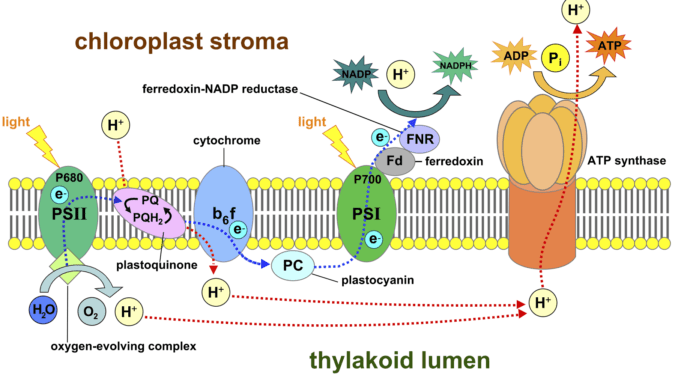
Let us get a better understanding of what is a photosystem and how they are so important for plants and other organisms. show the organisms on Earth rely on photosystems for survival. Discover their structure and function in this guide!
Definition
Photosystems are the protein complex that is essential for photosynthesis.
- They are structural and functional units of light reaction.
- And are an integral component of the thylakoid membrane.
Constitution
- Photosystem consists of a reaction center and accessory pigments; it’s also called a light-harvesting complex and antenna.
- Position in grana- Photosystems found in the thylakoid membranes of plants, algae, and cyanobacteria.
Function of Photosystem
1. Photosystems absorb sunlight.
2. They transfer energy and electrons.
Mechanism of photosystems
- Photosystems consist of a reaction center and a light-harvesting complex. Special chlorophyll-a pair present in the reaction center.
- Light harvesting molecules have two types: first Antenna molecules and second core molecules.
- Antenna molecules absorb light and come to an excited state and transfer the electron into the outer cell. Activated antenna molecules transfer energy to core molecules and come to the ground state. Core molecules transfer this energy to the reaction center then the formation of NADPH and ATP occurs in the reaction center.
Photosystems in cyanobacteria, algae, and higher plants
1. Photosystem- l (PS- II, Plastocyanin- ferredoxin oxidoreductase)
2. Photosystem- II ( PS- II, water- plastoquinone oxidoreductase)
(Image)
1. PS-I
Occurrence– It is present in both grana and stroma.
It lies on the outer surface of the thylakoid membrane.
What is PS-l
- Its reaction center is a molecule called 700 and it is bound with chlorophyll-a, chlorophyll-b, and carotenoid.
- It absorbs longer wavelengths of light, it absorbs 700nm maximally.
- PS-I generates strong reductants capable of reducing NADP and simultaneously, a weak oxidant.
- It participates in both cyclic and noncyclic photophosphorylation.
- PS-I is involved in the production of ATP in cyclic and NADPH in non-cyclic photophosphorylation.
2. PS- II
Occurrence– It is present in grana.
- PS-II is present in the outer surface of the thylakoid membrane.
What is PS-lI
- Its reaction center is a molecule called 680.
- It absorbs longer wavelengths of light, it absorbs 680 nm maximally.
- PS-II generates a strong oxidant capable of oxidizing H2O, simultaneously a weak reductant.
- It participates in non-cyclic photophosphorylation.
- It is involved in ATP production associated with the photolysis of water.
- It is rich in chlorophyll-b and carotenoid in comparison to PS-I
Reference
- Biochemical Pathways: An atlas of biochemistry and molecular biology
- 4th edition biochemistry Donald Voet & Judith G. Voet
- Lehninger, 4th edition, Principal of biochemistry, David L. Nelson & Michael
Written By: Richa Pachori
